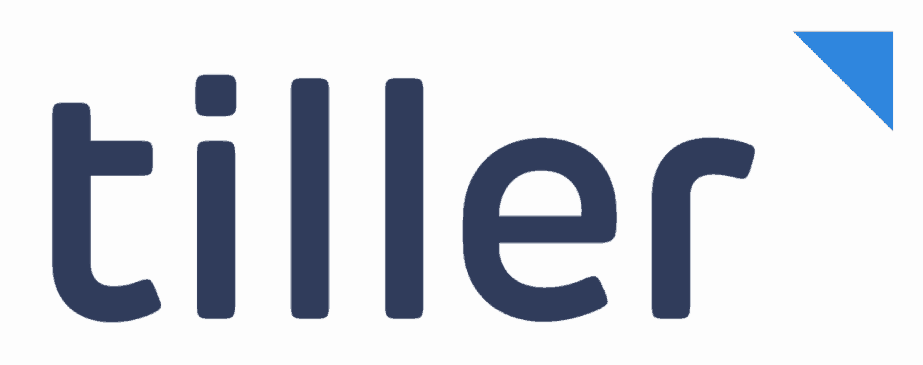Tiller Money Review: What Happens When You Automate Spreadsheets?
Our readers always come first
The content on DollarSprout includes links to our advertising partners. When you read our content and click on one of our partners’ links, and then decide to complete an offer — whether it’s downloading an app, opening an account, or some other action — we may earn a commission from that advertiser, at no extra cost to you.
Our ultimate goal is to educate and inform, not lure you into signing up for certain offers. Compensation from our partners may impact what products we cover and where they appear on the site, but does not have any impact on the objectivity of our reviews or advice.
Tiller will change the way you think about budgeting with a spreadsheet. If using Excel to track and analyze your spending is like learning to drive stick, Tiller is like driving an automatic. Learn exactly what makes Tiller a great budgeting app.

Our number one goal at DollarSprout is to help readers improve their financial lives, and we regularly partner with companies that share that same vision. If a purchase or signup is made through one of our Partners’ links, we may receive compensation for the referral. Learn more here.
Spreadsheets get a bad rap.
They mostly appeal to pencil pushers, number crunchers, and obsessive-compulsive types.
Unless you have a job that requires you to use Excel, you may not even know how spreadsheets work.
That’s why I abandoned my traditional spreadsheet budget several years ago. After trying in vain to find a simplified approach to tracking my spending, I decided that spreadsheets weren’t for me. They made budgeting a time-intensive activity and something I avoided doing. Then I found Tiller.
Tiller has changed the way I think about budgeting with a spreadsheet. If using Excel to track and analyze your spending is like learning to drive a stick shift, Tiller is like driving an automatic. Some people may prefer the more complicated route, but they both get you to the same destination.
Here’s what you need to know about Tiller: the good, the bad, and everything in between.
What is Tiller Money?
Tiller Money is a spreadsheet-based budgeting system that works with Google Sheets and Microsoft Excel. It doesn’t have its own spreadsheet system, so you need to have a Google account or Excel software to use it.
Tiller is similar to an expense tracker spreadsheet that you would create yourself, except it's much more sophisticated. Tiller pulls information from your bank accounts and then automatically populates a Google or Excel spreadsheet for you. You still get the same great spreadsheet magic that you love except Tiller does all the heavy lifting and data entry for you. You can try Tiller free for 30 days, and then it's $79/year to keep.
Show Hide moreTiller works with more than 21,000 banks, lenders, investment firms, and other financial institutions, including:
- Bank of America
- Chase
- PayPal
- Fidelity
- Wells Fargo
- Vanguard
- American Express
If your bank isn’t listed as a current Tiller partner, you can still use the spreadsheet, but you’ll have to add those transactions manually. There’s no limit to how many accounts you can link with Tiller. You can also check in every so often to see if they’ve added your bank.
Before Tiller, spreadsheet budgeters would have to add in every transaction manually. That meant logging into every account separately, copying the transactions, and then building your own budgeting spreadsheet. Tiller combines spreadsheets with automatic data.
Is Tiller Money Safe?
Some consumers are wary of giving companies their financial information, but Tiller has a bank-grade encryption system to keep your data safe. Signing in to your Tiller account is only available through Google. You can also set up two-factor authorization with Google to further increase your safety.
Tiller can’t transfer money for you, and passwords aren’t stored directly in Tiller. Company employees can’t see or touch your data and only people with direct access to your spreadsheet can view it. This is a similar security setup to other budgeting apps like Mint and Personal Capital.
Tiller was also named the Best Wealth Management Product in 2018 at the FinTech Breakthrough Awards and has been featured in numerous financial publications like Business Insider and Inc Magazine.[1]
How Tiller Works
Similar to other budgeting programs like Mint and Personal Capital, Tiller needs access to users’ bank, credit card, and other financial accounts. Tiller syncs transactions to its spreadsheets, where users can then divide them into appropriate categories.

Signing up
Signing up with Tiller is easy. To create an account, you need to provide basic information like your name and credit card number.
You then decide which banks and credit cards you want to sync with your Tiller sheet. To connect a new account, you have to put in your username and password. This process could take a few minutes, depending on how many accounts you have.
If you ever change a password or username to a connected account, you’ll have to change it in Tiller as well. Tiller will notify you if the bank or credit card provider stops syncing with your account, so you won’t miss any transactions.
Finally, you’ll create a Foundation Template, which is your main spreadsheet. This shows your transactions, monthly budget, net worth, yearly budget, current balances, and more.
It’s incredibly intuitive and only took a few minutes for me to get the hang of.
How long it takes to set up a Tiller spreadsheet will vary depending on how familiar you are with spreadsheets and the complexity of you budget.
Tiller has video tutorials and responsive customer service agents ready to help if you need it.
Related: How to Make a Budget in 7 Easy Steps
Review of Tiller Money’s Features
Tiller has a variety of features that can be overwhelming for new users. Read below to see what the service can do for you.
Tiller’s Foundation Budget Template

Tiller has one main spreadsheet to use, but you can have up to five sheets synced to your account at once.
You can also install various add-ons. For example, Tiller has a system where you can import Amazon purchase information so each Amazon item is added individually. If you’re buying several items from Amazon at once, this tool will help you categorize them separately.
The Tiller Foundation Budget has the following tabs:
Insights: This is the first tab and shows information such as your assets, liabilities, and net worth. It will also show your most popular retailers and biggest individual transactions.
Monthly Budget: This is the main budget dashboard where you can see the categories, how much is allocated for each category, and total monthly cash flow. It also shows what percentage of your budget is left compared to how many days are left in the month.
Categories: You can add new categories and change the amount allotted to each category.
Balances: This lists the current balances of all your synced accounts.
Transactions: Each transaction is listed here.
Net worth: The net worth tab takes all your available accounts and creates a line graph showing your net worth trajectory. You can add manual accounts that affect your net worth, like your mortgage balance and home value.
It also shows the net worth change per month and each account’s monthly balance. It’s important to track your net worth to see how your wealth is growing over time, and Tiller’s spreadsheet simplifies that process.
Tiller Money Labs
When you create your budget with Tiller, you’ll receive access to Tiller Money Labs. This is where the Tiller team experiments with creating new scripts, templates, and workflows. It also includes add-ons you can use to give your basic spreadsheet more functionality.
These add-ons include options like:
- Estimated Quarterly Taxes
- Holiday Gift Planner
- Spending Trends
- Statement Details
- Tags Report
- Yearly Insights
Tiller is often adding new solutions, so be sure to check this section regularly.
Automatic categorization
Tiller has an add-on that helps you automatically categorize certain transactions. You can create rules to always categorize certain vendors with specific categories.
You can also categorize various accounts in certain categories. For example, if you have a business credit card, you can set it up so those transactions are always reported as “business,” “reimbursable,” or “tax-deductible.”
This function can be found on the “AutoCat” tab on the Tiller Foundation Template.
For example, I set it up so it always categorizes Costco as “groceries” and Spectrum as “internet.” These rules take some of the work out of budgeting, especially if you frequent the same retailers every month.
Debt payoff spreadsheet
If you go to the Money Labs section of the Tiller Foundation Template, you’ll see an add-on for Debt Progress.
This will track your debt payoff progress. First, add the Debt Progress to your template. From there, select which debts you want to pay off. You’ll be able to decide what kind of payoff system you want to use — snowball, avalanche, or lowest-ranked priority.
Tiller will track your starting balance, current balance, monthly interest, remaining interest, and estimated payoff date.
It will also suggest how much to increase your monthly payments to achieve debt freedom sooner.
Community, support, and weekly webinars
On the Tiller Foundation Template, there’s a special tab marked “help.” Here you’ll find answers to common questions such as how to manually add transactions or why transactions aren’t syncing.
Currently, Tiller doesn’t do one-on-one support, but they do have a weekly webinar that explains how to set up a budget and create the automatic categorization rules, among other common questions. There’s a Q&A portion at the end of each call where you can ask any questions you have that weren’t answered during the webinar.
You’ll also have access to the Tiller Money Community. In this online forum, you’ll receive support from other Tiller users as well as Tiller’s own staff. The community appears to be active and engaged, with multiple topics and questions posted each day.
Tiller Pricing

Tiller’s pricing is simple. They only offer one tier of service at $79 per year, or $6.58 per month, with no discounts for students.
While there are plenty of free budget tracking tools on the market, Tiller’s pricing is on par with, and even less costly than, some other budgeting apps. If you’re hesitant about the cost, you can try Tiller free for 30 days. If you decide it’s not a good fit for you, then you can cancel your account before the 30-day period ends and Tiller won’t charge you.
Review of Tiller’s Benefits
In addition to its features, these are the reasons I love using Tiller.
It’s simple. Most people think of budgeting spreadsheets as inherently complicated, but Tiller’s system is really easy to pick up. I’ve used Tiller for almost two years now, and I only needed a brief time to master it. On top of that, categorizing expenses takes only a few minutes a week.
Fast customer support. I’ve never used Tiller’s customer service, but many Reddit users say they respond quickly. They also have a community support group where you can search for your question and see what other users have said.

They’ll help you migrate from your old budgeting tool. Tiller recognizes that many of its customers have been using other budgeting systems and don’t want to lose that data. They offer step-by-step help to upload information from Mint, Personal Capital, Quicken, and You Need a Budget. You can also bulk upload data directly from your bank or credit card provider.
Spreadsheets can be shared. You can share your Tiller spreadsheet with anyone else with a Google account. This makes it easier for my husband and I to manage our money together.
Easy access with the cloud. Because Tiller works with Google Sheets, it’s supported and hosted on the cloud. That means you’ll always have access to your Tiller spreadsheet when logged into your Google account. I like having my budget on the cloud because I can look at it no matter where I’m logged in.
Where Tiller Struggles
No app or budgeting tool is perfect. Here’s a review of Tiller Money’s downsides and where I think the platform struggles.
Tiller isn’t free. It costs $79 a year, but it does come with a free 30-day trial to test out the app before you decide to commit. Budgeting apps like Mint and Personal Capital are free to use, so this can be a surprise if you’re not used to paying for a budgeting service.
It’s completely spreadsheet-based. If you prefer using a mobile app, then Tiller won’t be a good fit for you. Because it’s spreadsheet-based, Tiller works best on a computer or laptop. Mobile customers may access their Tiller spreadsheet on their phone, but it’s not easy to use and needs WiFi or data access to upload new transactions.
Tiller has several spreadsheets available for Excel, but most people seem to prefer using Google Sheets. If you’re new to Google Sheets, you might have a hard time using it at first.
Tiller is only a budgeting system. Unlike some of its competitors, Tiller doesn’t track your credit score or tell you if you’re not saving enough for retirement. It’s designed to help you budget and track your money, not create a comprehensive financial plan.
Related: How to Track Expenses in 3 Easy Steps and Never Fail at Budgeting Again
Tiller Money Review Summary: Who Should Use Tiller?
I have friends and readers who refuse to pay for budgeting services like Tiller, especially when there are free alternatives on the market. Even though Tiller does cost money, it’s roughly the price of two lattes per month. If using Tiller helps you improve your budgeting approach, you’ll save much more than you’ll spend on the service.
I love using Tiller because it combines the clarity of a spreadsheet with the ease of an online budgeting system. I don’t have to manually track my transactions because it automatically adds everything. I’ve also had no issues with any of my accounts syncing with Tiller, which means I never miss an expense.
What I love about using Tiller is that I can change my budget at any time. If I need to add a new category or change how much I’m spending on restaurants, the process takes just a few minutes.
Even if you’re not sure about using a spreadsheet to budget, I recommend trying Tiller Money for the free 30-day trial. The simplicity of this spreadsheet-based tool may surprise you.






